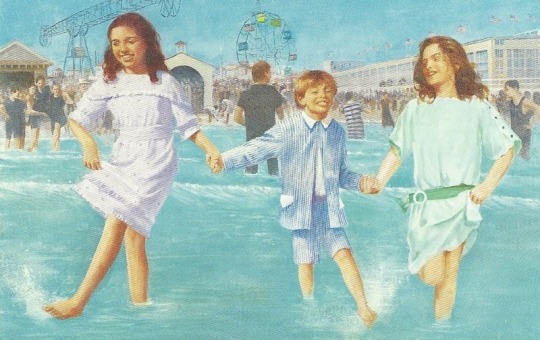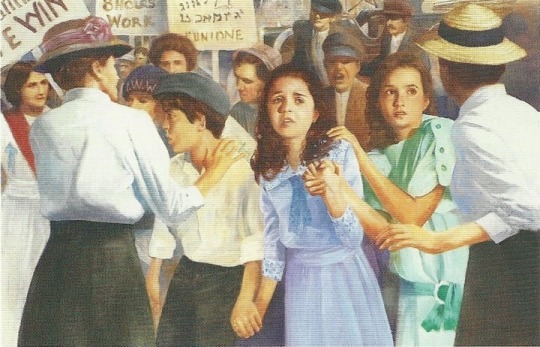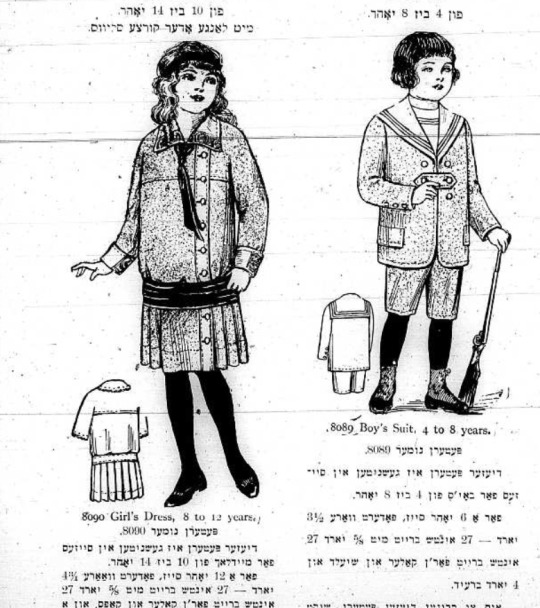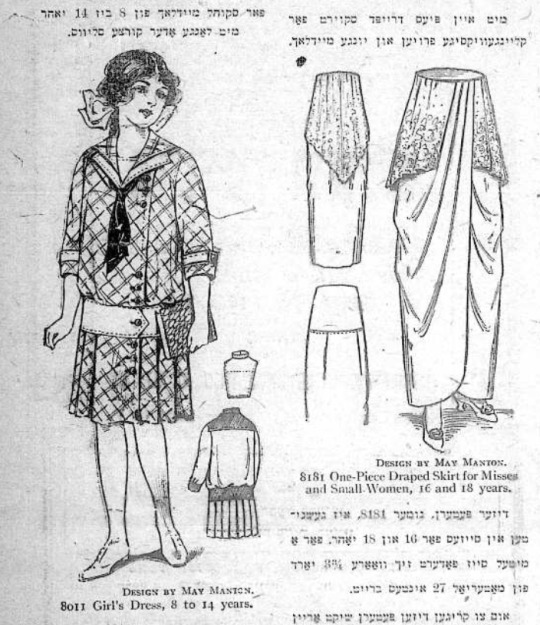#national library of israel
Text

Domestic cats in Tel Aviv. 1978.
National Library of Israel - 318_Ag_JHN_NationalLibraryIsrael
Jewish Heritage Network
europeana.eu
45 notes
·
View notes
Text
By Judith Sudilovsky
A permanent exhibition gallery will present rare heritage treasures of the Jewish people and Israeli society on a rotating display, alongside items from the Islam & Middle East and the Humanities collections.

A special display table for documents from the library’s archival collections was painstakingly created by permanent exhibit curators Netta Assaf and Yigal Zalamona to safely exhibit writings by great Jewish and Israeli writers, creators and thinkers, including S.Y. Agnon, Prof. Yeshayahu Leibowitz, Prof. Nechama Leibowitz, the poet Rachel, Leah Goldberg, Uri Zvi Greenberg, David Grossman, A.B. Yehoshua, Eli Amir, Jacqueline Kahanov, Rabbi A.Y. Kook, HaHazon Ish, and others.
Displayed items commemorating moments from history include the first draft of “Jerusalem of Gold” by Naomi Shemer; the note found on poet and fighter Hannah Szenes (Senesh) on the day of her execution by Nazi firing squad; a letter sent as a young man by Israel’s first astronaut, Ilan Ramon, to Prof. Yeshayahu Leibowitz and his response; and writer Stefan Zweig’s suicide note.
Small details
Funding for the new building came from the Israeli government in partnership with Yad Hanadiv – the Rothschild Foundation, the Gottesman Family of New York, and individual donors from Israel and abroad.
The architects, who are not Jewish, invested great energies in learning about Jerusalem, Israelis, and Jewish culture and traditions before they started the project.
Once the work began, project manager Ephrat Pomerantz worked in close coordination with the Swiss architectural firm and local executive architects Mann Shinar to bring to life the vision the library staff had when they first embarked upon the renewal project 30 years ago to make the NLI more accessible and independent of the Hebrew University.
11 notes
·
View notes
Text



Ana's Green Dress as seen in Rebecca to the Rescue and Changes for Rebecca
Pattern 7860, Di Froyen-Velt June 1913, via The National Library of Israel
#historical inspirations#ana rubin#rebecca rubin#american girl#also trust me I am NOT happy about having to rely on The National Library of Israel for research#but to view the ones from the YIVO Institute for Jewish Research you have to go to New York#or order microfiche and the only library in town with the machines for microfiche is currently closed
34 notes
·
View notes
Text
My latest newsletter is out on @/substack, focusing on topics ranging from libraries, pop culture, archives, climate change, project 2025, sidelining of pro-Palestinian voices by the DNC, cancellation of The Acolyte, LGBTQ+ people (and topics), and new Japanese and Western animation!
#newsletters#crunchyroll#yuri#lgbtq+#newsletter#btas#batman the animated series#pop culture#genealogy#project 2025#the acolyte#climate change#archives#pro palestine#palestinians#israel#anime#animation#ancestry#nara#national archives#substack#libraries
2 notes
·
View notes
Text
The Palatine National Library was bombed.
This is a tragedy. The loss of information is a loss to culture and information. I am doing more research but if anyone wants to add on what they know about the library, feel free.
.
I am aware this is pretty old news to most people, but I wanted to make a version with a real source and no guilt tripping, because thats the version that keeps being shown to me and its frustrating.
7 notes
·
View notes
Text
04/25/2023 is Anzac Day 🇦🇺, World Penguin Day 🐧🌎, Memorial Day 🇮🇱, Anzac Day 🇳🇿, National DNA Day 🧬🇺🇲, National East Meets West Day 🇺🇲, National Hug a Plumber Day 👩🔧👨🔧🇺🇲, National Telephone Day ☎️🇺🇲, National Zucchini Bread Day (eww! 🤮) 🍞🇺🇲, National Library Workers Day 🇺🇲, National Lingerie Day 👙🇺🇲, World Malaria Day 🇺🇳

#anzac day in Australia#world penguin day#memorial day in israel#anzac day in new zealand#national dna day#national east meets west day#national hug a plumber day#national telephone day#national zucchini bread day#national library workers day#national lingerie day#world malaria day
0 notes
Text
Israel Kamakawiwoʻole - Somewhere Over the Rainbow
1993
The cover medley "Over the Rainbow/What A Wonderful World" was first released on Hawaiian singer Israel Kamakawiwoʻole's 1990 album Ka ʻAnoʻi, and later an acoustic rendition of it was released on his 1993 album Facing Future.
The song was originally recorded in a spur-of-the-moment demo session in 1988. Kamakawiwoʻole called the recording studio at 3 am, and was given a 15-minute deadline to arrive by recording engineer Milan Bertosa. At the time, copies of the acoustic recording were made only for Kamakawiwoʻole himself and Bertosa. The song was re-recorded the following year as an "upbeat Jawaiian version" for Kamakawiwoʻole's debut album Ka ʻAnoʻi.
In 1993, five years after the original recording, Bertosa played the acoustic version for producer Jon de Mello while the two were completing work on Facing Future, and de Mello decided to include the original 1988 acoustic version of the song on the album.
In 2020, it was selected for preservation in the United States National Recording Registry by the Library of Congress as being "culturally, historically, or aesthetically significant".
youtube
2K notes
·
View notes
Text
by Lincoln Brown
Beckett Law, a religious freedom advocacy group, has taken up the cause of three Jewish students at UCLA. The students claim that in the wake of the October 7 terrorist attack on Israel, they faced mounting antisemitism, which included barring them from access to areas of the campus. The students are also represented by Clement & Murphy, PLLC.
In the lawsuit, Frankel v. The Regents of the University of California, the plaintiffs claim that pro-Hamas/anti-Israel protesters set up barricades on the Los Angeles campus, effectively creating a "Jewish Exclusion Zone." Beckett Law states that after creating the encampment, protesters not only constructed barriers but also linked arms to prevent Jewish students from accessing the most popular areas on campus. They also imposed an ideological test, and those whose views were deemed to be sufficiently anti-Israel were issued wristbands and allowed to pass unmolested through the "checkpoints."
By contrast, Beckett law says that Jewish students were harassed and even assaulted. Law student Yitzchok Frankel was forced to find other ways to reach his classes because his route was blocked by the exclusion zone. Sophomore Joshua Ghayoum could not attend classes or study sessions because of the zone and the antisemitic activities on campus. Additionally, he was forced to listen to chants of "death to the Jews" and "death to Israel." Eden Shemuelian had trouble getting to her final exams because of the zones and had to listen to the vitriol from the encampment as she tried to study. These, said Beckett Law, are just three examples of the problems faced by Jewish students at UCLA.
Mark Rienzi, president and CEO of Becket, stated:
If masked agitators had excluded any other marginalized group at UCLA, Governor Newsom rightly would have sent in the National Guard immediately. But UCLA instead caved to the anti-Semitic activists and allowed its Jewish students to be segregated from the heart of their own campus. That is a profound and illegal failure of leadership. This is America in 2024—not Germany in 1939. It is disgusting that an elite American university would let itself devolve into a hotbed of antisemitism. UCLA’s administration should have to answer for allowing the Jew Exclusion Zone and promise that Jews will never again be segregated on campus.
The suit notes:
Defendants have deprived Plaintiffs of the free exercise and enjoyment of religion without discrimination or preference, as secured by the California Constitution, through a policy and practice that treats Plaintiffs differently than similarly situated non-Jewish individuals because Plaintiffs are Jewish.
Defendants furthered no legitimate or compelling state interest by engaging in this conduct.
Defendants failed to tailor their actions narrowly to serve any such interest.
As a result of Defendants’ actions, Plaintiffs have been injured by losing access to educational opportunities, losing access to library and classroom facilities, losing in-person learning opportunities, losing the ability to prepare for exams, being denied equal participation in the life of the university, suffering emotional and physical stress that has diverted time, attention, and focus from study, and by other harms.
In addition to seeking compensation for damages, the primary goal of the lawsuit is to hold the leadership of the University of California accountable and ensure that such a situation never arises again.
As usual, "never again" is here and now. The fact that these "students" take a great deal of pride in slinging the term "Nazi" at anyone with which they disagree yet use tactics that echo those of the Third Reich is ironic and chilling. But their savage nature can be attributed, at least in part, to those who educated them.
Given that, one must ask if the regents of the University of California were merely caving to mob pressure. Did they turn a blind eye to the madness out of fear or because of the optics? Ideally, there should be nothing wrong with discussing the war and even debating whether or not Israel's response to the Hamas attack has been proportionate.
The regents, president, vice-president, and chancellors never stopped to think, "Gee, it seems to be getting awfully brownshirty around here." And if they did, they were too cowardly or indoctrinated to say a word.
435 notes
·
View notes
Text
3 March, 2011
An ongoing trial in Tel Aviv is set to determine who will have stewardship of several boxes of Kafka’s original writings, including primary drafts of his published works, currently stored in Zurich and Tel Aviv. As is well known, Kafka left his published and unpublished work to Max Brod, along with the explicit instruction that the work should be destroyed on Kafka’s death. Indeed, Kafka had apparently already burned much of the work himself. Brod refused to honour the request, although he did not publish everything that was bequeathed to him. [...]
But to begin with, let us consider who the parties are to the trial and the various claims they make. First, there is the National Library of Israel, which claims that Esther Hoffe’s will should be set aside, since Kafka does not belong to these women, but either to the ‘public good’ or else to the Jewish people, where these sometimes seem to be the same. David Blumberg, chairman of the board of directors of the National Library, puts the case this way: ‘The library does not intend to give up on cultural assets belonging to the Jewish people ... Because it is not a commercial institution and the items kept there are accessible to all without cost, the library will continue its efforts to gain transfer of the manuscripts that have been found.’ It is interesting to consider how Kafka’s writings can at once constitute an ‘asset’ of the Jewish people and at the same time have nothing to do with commercial activities. [...]
So it seems we are to understand Kafka’s work as an ‘asset’ of the Jewish people, though not a restrictively financial one. If Kafka is claimed as a primarily Jewish writer, he comes to belong primarily to the Jewish people, and his writing to the cultural assets of the Jewish people. This claim, already controversial (since it effaces other modes of belonging or, rather, non-belonging), becomes all the more so when we realise that the legal case rests on the presumption that it is the state of Israel that represents the Jewish people. This may seem a merely descriptive claim, but it carries with it extraordinary, and contradictory, consequences. First, the claim overcomes the distinction between Jews who are Zionist and Jews who are not, for example Jews in the diaspora for whom the homeland is not a place of inevitable return or a final destination. Second, the claim that it is Israel that represents the Jewish people has domestic consequences as well. Indeed, Israel’s problem of how best to achieve and maintain a demographic majority over its non-Jewish population, now estimated to constitute more than 20 per cent of the population within its existing borders, is predicated on the fact that Israel is not a restrictively Jewish state and that, if it is to represent its population fairly or equally, it must represent both Jewish and non-Jewish citizens. The assertion that Israel represents the Jewish people thus denies the vast number of Jews outside Israel who are not represented by it, either legally or politically, but also the Palestinian and other non-Jewish citizens of that state. The position of the National Library relies on a conception of the nation of Israel that casts the Jewish population outside its territory as living in the Galut, in a state of exile and despondency that should be reversed, and can be reversed only through a return to Israel. The implicit understanding is that all Jews and Jewish cultural assets – whatever that might mean – outside Israel eventually and properly belong to Israel, since Israel represents not only all Jews but all significant Jewish cultural production. I will simply note that there exists a great deal of interesting commentary on this problem of the Galut by scholars such as Amnon Raz-Krakotzkin, who, in his extraordinary work on exile and sovereignty, argues that the exilic is proper to Judaism and even to Jewishness, and that Zionism errs in thinking that exile must be overcome through the invocation of the Law of Return, or indeed, the popular notion of ‘birthright’.
289 notes
·
View notes
Text

“I have the true feeling of myself only when I am unbearably unhappy.” ― Franz Kafka
Drawings by Franz Kafka from his sketchbook, circa 1901-7. Literary Estate of Max Brod, National Library of Israel, Jerusalem. Photo by Ardon Bar Hama
#classical literature#albert camus#sylvia plath#franz kafka#literature#classical quotes#poetry#quotes#classics#booklr#dark acamedia#dead poets society#edgar allen poe#dark literature#lit#literary quotes#classic literature#book quote#bookblr#books#dostoevksy#crime and punishment#brothers karamazov#notes from underground#virginia woolf#the bell jar#lana del rey#excerpts#franz kafka quotes#franz kafka diaries
160 notes
·
View notes
Text
The accusation of "Pinkwashing" is a conspiracy theory that taps into several antisemitic canards. Specifically, it paints Israeli support for queer rights not as a hard-won fight by a minority group inside of a flawed democracy. Instead, Israel's record on queer rights is cast as a malicious intentional public relations move by a hive-minded conspiratorial group trying to distract from their other crimes.
Once you believe that, anything positive from Israel can be believed as part of a broader conspiracy theory for nefarious purposes.
And from that, it's not a big leap into believing that anything from Israel - which is home to 50% of the world's Jewish population - is also just as malicious and insincere.
And once you're there, it's easy to agree with the following statement:
"[...the National Socialist movement] will prevent the Jewish people from intruding themselves among all the other nations as elements of internal disruption, under the mask of honest world citizens, and thus gaining power over these nations."
That was declared by Adolf Hitler, in a two-hour-long speech he delivered on January 30, 1937 in the Reichstag - the fourth anniversary of his appointment as Chancellor of Germany.
The Pro-Palestinian movement is, in its current form, literally impossible to tell apart from actual Nazis.
Adapted text from @the-library-alcove
181 notes
·
View notes
Note
hey avi! i’m a conversion student who was raised italian-american. my heritage is really important to me, so i’m really interested in learning more about all types of judaism practiced in italy, and was wondering if you had any resources on learning more about italki judaism! of course i’m going to ask my rabbi, but i also wanted to ask you and any followers of yours who may know where to look. i’m particularly interested in things like recipes, minhagim, and daily life throughout history.
(no bad faith is meant at all and i hope this is taken as respectful: specifying so much because i know you get a lot of utterly insane anons about being italki/sephardi)
OH BOY DO I.
torah.it is an absolutely phenomenal resource with a ton of recordings, pdfs, and videos about primarily the roman rite in italy but also the sephardi and ashkenazi rites as well.
there's also a website dedicated to recordings of italian jewish music from numerous rites called thesaurus of jewish-italian liturgical music.
the national library of israel also has a lot of resources, like recordings of piyutim. it's a bit difficult to navigate if you don't speak hebrew, they do have an english option but it can be a little finicky.
the jews in italy
complete works of primo levi, an italian jewish auschwitz survivor and chemist. there is even an institute named after him dedicated to preserving italian jewish minhagim. italian jews lost nearly 20% of their population (not proportionally as much as many of the german occupied countries, but the italian jewish community numbered only around 44,000 before the war) and a lot of italian jewish life (particularly italki minhag) was nearly lost. but...
leo levi, an italian jewish ethnomusicologist nearly single-handedly preserved many italian jewish musical traditions when he travelled across the country to record elders and community leaders singing their traditional melodies.
ensemble nuria (formerly ensemble bet hagat) has recorded two amazing albums of revived italian jewish music.
in terms of cookbooks, edda servi machlin is a name you should know. her classic italian jewish cookbook is considered to be the standard.
there is also cooking alla giudia, portico, jewish flavors of italy (which includes some libyan recipes from the libyan jews of rome), la cucina romana e ebraico-romanesca (i just got this one on kindle so i haven't read it yet), and cucina ebraica.
francesco spagnolo is another name you should know, he is a scholar of italian jewish culture.
127 notes
·
View notes
Text








June 1913 | September 1913
November 1913 | December 1913
January 10, 1914 | February 15, 1914
February 22, 1914 | March 15, 1914
Di Froyen-Velt (the Jewish Ladies' Home Journal) was a Yiddish women's magazine published in New York in the early 20th century.
The magazines I pulled these images from are available on the website of The National Library of Israel - and you can download them as pdfs. Not all the magazines listed are available and I didn't pull images from all the magazines available to download. Also the downloading is a little glitchy, you might have to click download a couple of times before the download actually starts.
I don't know if the patterns were produced under the label of the magazine, but the March 15, 1914 patterns are listed as being by May Manton (see more here and here).
#also trust me I am NOT happy about having to rely on The National Library of Israel for research#but to view the ones from the YIVO Institute for Jewish Research you have to go to New York#or order microfiche and the only library in town with the machines for microfiche is currently closed#real history#rebecca rubin#jewish history
28 notes
·
View notes
Text

Interior of the Abuhav Synagogue in Safed, Israel. Photographer: Boris Karmi (1914-2002)
source: אוסף מיתר, האוסף הלאומי לתצלומים על שם משפחת פריצקר, הספרייה הלאומית Meitar Collection, The Pritzker Family National Photography Collection, The National Library of Israel.
103 notes
·
View notes
Text

More than 300 Palestinian sports teams are calling to ban Israel from the Olympics over its genocide against Palestinians in Gaza.
The Israeli offensive on Gaza has claimed the lives of 26,706 civilians, including 11,422 infants and children. Ninety percent of Palestinians are internally displaced and living in inhumane conditions with “no electricity, no food, no water, no fuel.” No functional hospitals. No mosques. No churches. No libraries. No schools. No universities. No bakeries. At this rate, the brutal Israeli regime will soon destroy every aspect of life in Gaza, including its sports.
Join the global campaign to peacefully disrupt the road to Paris 2024 calling on the IOC to #BanIsrael until it ends its crimes against Palestinians and recognizes our UN-stipulated rights.
Register your group to join the campaign
We thus urgently demand:
An immediate suspension of Israel from participation in all international sports until it fully complies with international law and sports regulations
For global and European sports governing bodies to immediately uphold their statutory obligations – especially their own rules on human rights and non-discrimination given Russian, South African and other precedents. This would include, inter alia, a ban on Israel competing at the 2024 Paris Olympics, FIFA World Cup, and UEFA’s EURO.
For a deeper analysis on the rationale to suspend Israel from international sports, please review this paper (also available in Spanish) that will be sent to sports organisations.

Here’s what you can do.
1. Join the Global Day(s) of Action, March 15-17
Ahead of the IOC executive board meeting in Lausanne Switzerland (March 19-21), take the call from Palestinian teams to your National Olympic Committee, International Sports Federations and Recognized Sports Federations. Organize protests, sit-ins, peaceful disruptions, or awareness raising events on Israeli attacks on Palestinian sports. Register your group for more information.
2. Olympics qualifiers and events
From now until the Olympic Games start in July, the road to Paris will be filled with opportunities to remind the IOC that there is no place in the Olympics for genocide perpetrators. Earlier this month, four runners took the #CeasefireNow message to the Olympic Trials Marathon in Florida, crossing the finish line with Palestinian flags. Find information on Olympic time trials and qualifiers (also here) or other Olympics-related events in your area. Register your group for more information.
3. Kick Israeli apartheid out of sports
Is your country a signatory to the International Convention Against Apartheid in Sports? If so, it has an obligation to “take all appropriate action to secure the expulsion of a country practising apartheid from international and regional sports bodies.” Register your group to learn what you can do.
4. Sign the petition to ban Israel from world sports
Join more than 70,000 people from all over the world who have signed the petition calling for banning Israel from international sport.
Add your signature here
Israel has killed Palestinian Olympic Football coach Hani Al Masdar, destroyed the Palestinian Olympic Committee offices, and turned sports facilities into shameful mass detention and torture centers.
We can’t sit back as the IOC allows Israel to use the Olympics to sportswash its genocide in Gaza and its apartheid regime against Palestinians everywhere. Support the call from Palestinian teams.
Join the campaign to #BanIsrael from the Olympics and peacefully disrupt the road to the Paris 2024 games.
#israel#free gaza#gaza strip#israel is a terrorist state#gazaunderattack#genocide#gaza#free palestine#palestine#jerusalem#news#palestine news#war on gaza#news update#palestinian resistance#war news#northern gaza#west bank#rafah#tel aviv#strike#global strike#strike for palestine#strike for gaza#protest#boycotts#olympics#ban israel#free plaestine#free yemen
247 notes
·
View notes
Text
Municipal authorities in Gaza have accused the Israeli army of deliberately destroying thousands of books and historical documents. They have also called for the intervention of the United Nations Educational, Scientific and Cultural Organization (UNESCO) to “intervene and protect cultural centers and condemn the occupation’s targeting of these humanitarian facilities protected under international humanitarian law.”
As was the case in Sarajevo in 1992—when Bosnian Serb forces, stationed in the hills above the city, razed the National and University Library of Bosnia and Herzegovina to the ground—the targeted destruction of Gaza’s primary public library is a stark reminder that genocide is about more than just the premeditated mass extinguishing of human life; it’s also about the calculated, and often vindictive, destruction of a people’s culture, language, history, and shared sites of community.
Like the purposeful wiping out of entire families, a tactic employed by the Israeli army long before this latest assault began, the deliberate destruction of cultural and historic sites is a way for Israel to erase all evidence of Palestinian life, Palestinian humanity, from Gaza. To turn the besieged enclave—with its ancient mosques and archeological sites, its labor-of-love bookstores and meticulously-curated libraries, its pesky health care workers and journalists and sole survivors—into an empty soccer field.
303 notes
·
View notes